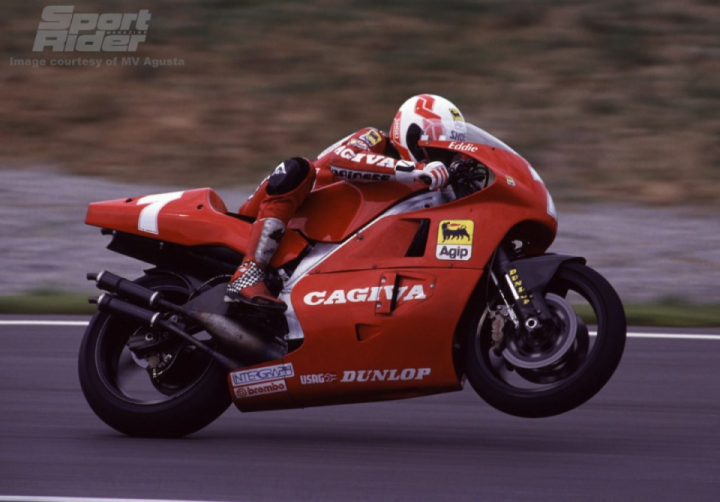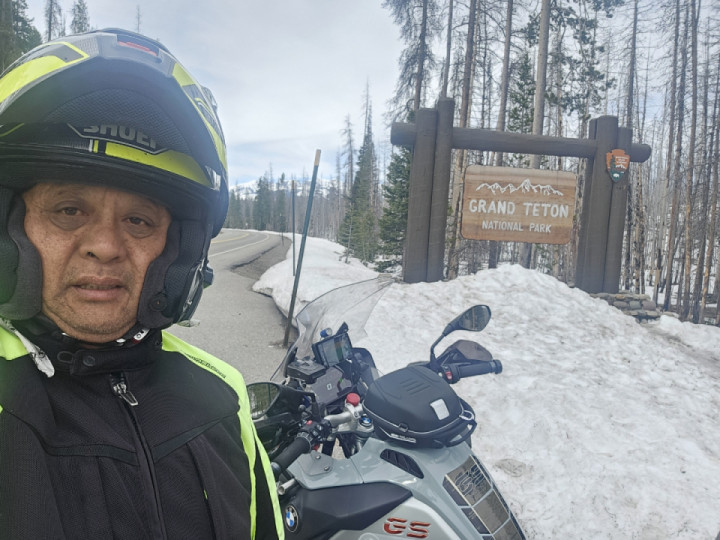These images are a real treasure trove from the early 1990s featuring Cagiva's 500cc Grand Prix machine. Scroll through the gallery below to see some of our favorites, and to learn more about Cagiva time in road racing's premier class.

Cagiva was at one time the parent company of MV Agusta, and at various times in its past controlled Ducati, Husqvarna and Moto Morini. MV Agusta is now the main brand of the company, and no Cagiva motorcycles are currently produced. The company entered the 500cc Grand Prix class in the early eighties; riders in those early years included Jon Ekerold, Virginio Ferrari, Marco Lucchinelli, Raymond Roche, Didier de Radiques and Randy Mamola (shown here in 1988).Courtesy of MV Agusta

Mamola finished 12th in the series in 1988, his first year on the bike, and scored a podium in the Beglium Grand Prix that year. Mamola rode for the company until 1990 (shown), and in that year his teammates were Alex Barros and Ron Haslam. Like the other front-running bikes in the class at the time, the Cagiva featured a V-4 two-stroke motor; in those early years, the bike was developed with input from Massimo Tamburini, Kenny Roberts, and Ferrari.Courtesy of MV Agusta

Four-time 500cc World Champion Eddie Lawson joined the team in 1991, and helped develop the bike to be more reliable and competitive.Courtesy of MV Agusta

Lawson scored the company's first podiums at the French and Italian Grands Prix that year, on his way to sixth in the overall standings.Courtesy of MV Agusta

Lawson leads an Grand Prix early in 1992. Giacomo Agostini was brought on board that year to manage the program, and the team switched from Michelin to Dunlop tires.Courtesy of MV Agusta

Lawson took advantage of a smart tire selection that matched tricky conditions in Hungary that year to give Cagiva its first 500cc Grand Prix win. Note the carbon fiber swingarm on this machine.Courtesy of MV Agusta

With Lawson retiring at the end of 1992, Doug Chandler and Mat Mladin were signed for the 1993 season. John Kocinski came on board later in the year after starting the season on the Suzuki 250cc Grand Prix team and leaving that team partway through the season.Courtesy of MV Agusta

Mladin (12) and Chandler (5) on the grid. Chandler scored a podium in Australia in his first outing on the Cagiva, and went on to finish the season in 10th position overall.Courtesy of MV Agusta

In his third race on the bike, Kocinski won the US Grand Prix at Laguna Seca.Courtesy of MV Agusta

Carl Fogarty, then a rider for Ducati in the World Superbike Championship, had a wildcard entry on the Cagiva for the British Grand Prix in 1993 and finished in fourth.Courtesy of MV Agusta

Mladin had a best finish of 6th at the final round of the year, and ended the season 13th in points.Courtesy of MV Agusta&

Kocinski rode again for the team in 1994, winning the opening round of the season in Australia and scoring six more podium finishes to end the season in third overall.Courtesy of MV Agusta

Doug Chandler (right) was Kocinski's teammate for the year, and had one podium (a second-place finish in Argentina) to finish 9th for the season. This team photograph shows Kociinski (left) and Chandler with Giacomo Agostini (center).Courtesy of MV Agusta

While Kocinski had the best results to date on the Cagiva in 1994, the company withdrew at the end of the season. The bike made one appearance in 1995 at the Italian Grand Prix, where Pierfrancesco Chili finished 10th.Courtesy of MV Agusta
#Cagiva #GrandPrix #500cc #History #Racing #Race #Moto #Bike

































